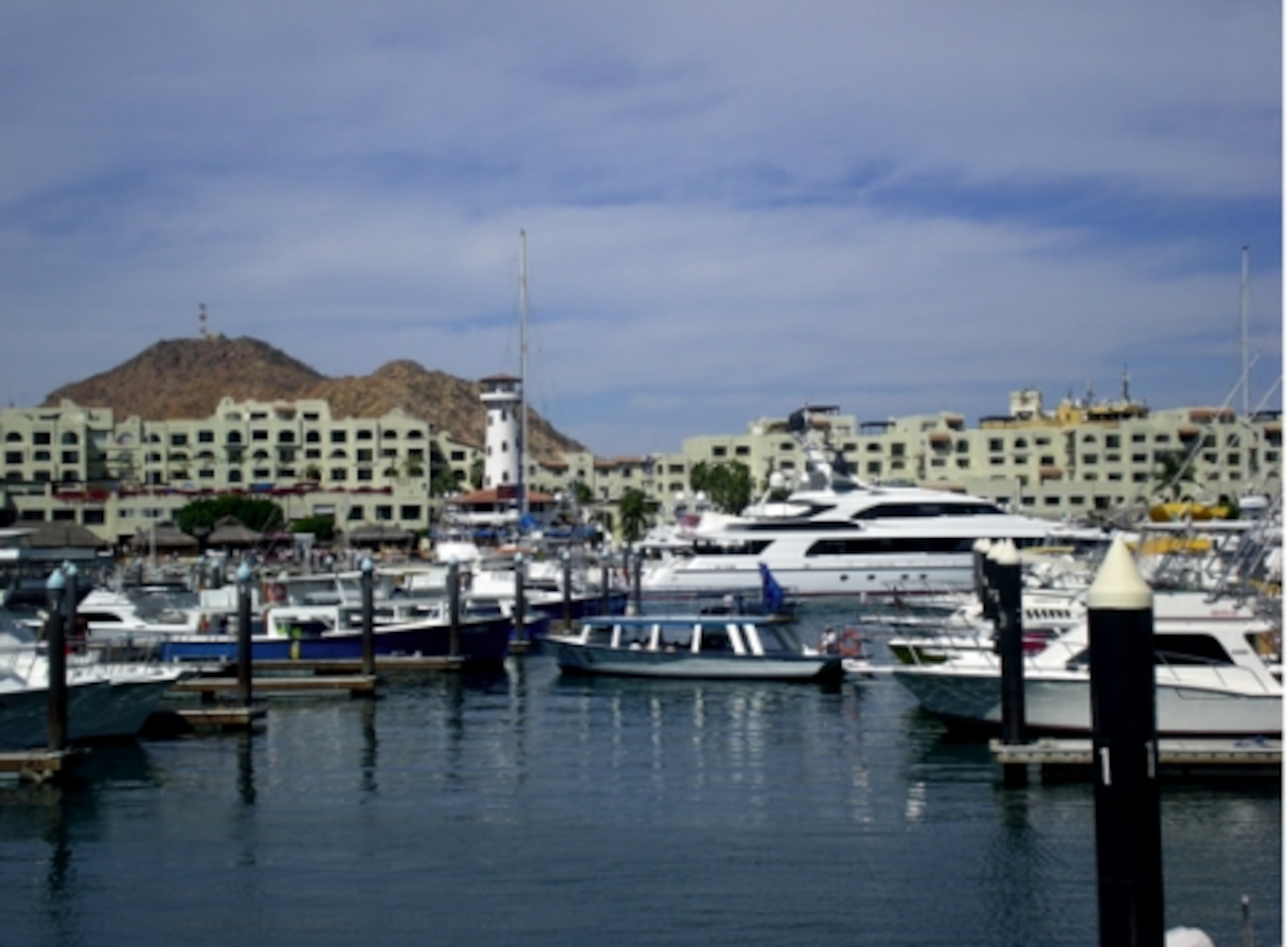
Promise and Peril: Baja, Mexico
In the Destination Watch column in our May/June issue, “Promise and Peril,” Traveler‘s Geotourism editor Jonathan Tourtellot‘s tells us that travelers should put a value on authenticity, and make “intelligent choices” when you visit a place. “When you seek authenticity, and pay for it, you’re not only sending a message, you’re helping protect a local asset,” he writes. He mentions IT editor Janelle Nanos‘s recent trip to Cabo San Lucas as an example of a place on the cusp of tourism overload. Nanos offers her full story here.
Yachts crowd the harbor in downtown Cabo San Lucas
Settling into my flight home from Cabo San Lucas, I struck up a conversation with my sunburnt seatmate. Our trips, we both agreed, were tremendous, but we quickly realized they were also very different. He’d spent much of his time sipping margaritas at his all-inclusive resort, and spoke of tallying up a $500 tab at the bars following an afternoon booze cruise. I too swilled a few margaritas, but I also wandered up to the artist community of Todos Santos, explored Pacific coast beaches, and stumbled upon a local semi-pro soccer game. He’d gone to relax and get away. I went to experience the place, but had to wander outside its tourist precincts to find a true sense of local culture.
It’s been a long time since Cabo San Lucas resembled the Baja of Steinbeck’s novels. Now it’s most commonly referred to as the “next Cancun.” Timeshare hucksters shill “beautiful” condos that have yet to be built, and driving the corridor from Cabo San Lucas to San Jose del Cabo is like watching time-lapse photography of construction. Grabbing my ocean kayak from JT Water Sports, on the tip of Playa el Médano, I gawked at the eight-million-dollar Hacienda condos rising from the shoreline like monstrous sand castles. None of the hotels and bars that lined the beach were there 15 years ago.
Thinking big can get our favorite destinations into trouble.
Building opportunities abound in Baja, creating jobs and an influx of workers who have helped push the region’s population to 200,000. But now the city’s water table is challenged and the size of prize marlins has declined over the past 10 years. And as the building boom begins to creep up the coast, Playa Los Cerritos illustrates what’s coming next.
Driving 30 minutes north of Cabo, I turned onto a dirt road at Km 64, and found a swimmable nook in an otherwise ragged shoreline. A handful of wetsuit-clad kids perched on their boards, bobbing on the waves like seals.
But I felt like I’d arrived too late: The foundations of a new hotel rose from the cove’s edge, and a restaurant and activities center already in place for a resort that has yet to be built.
Some say it’s already too late for Cabo, that the Manifest Destiny-approach to land speculation is sucking the life out of the city. But Cabo is one of many global examples of what can happen when you trade the qualities of true place for the benefits of mass tourism.
Cabo may be in peril if it continues its growth at the rate it’s currently expanding, but I hope that its leaders see the promise there, and work to create a plan to preserve the uniqueness of the place.
- National Geographic Expeditions
What do you think? Is it too late for Cabo San Lucas?
Photo: Janelle Nanos
